overwhelmed by demand and short on hands?
Tired of constant mistakes and errors?
Want to spend more time working on your business, instead of in it?
We can help you.
With over five years of hands-on experience working shoulder to shoulder with small businesses, we’ve gained a clear understanding of the challenges owners face daily. From inconsistent quality and defective products to time-consuming processes, inventory issues, and cultural resistance to change—we’ve seen it all.
The real challenge isn’t just recognising the problems, it’s knowing where to start and how to fix them without breaking the bank.
Drawing on our corporate manufacturing expertise, we’ve taken proven efficiency methods and transformed them into a practical, accessible toolkit designed specifically for small businesses. Our aim is to equip you with the knowledge, skills, and confidence to take control of your operations and make meaningful improvements.

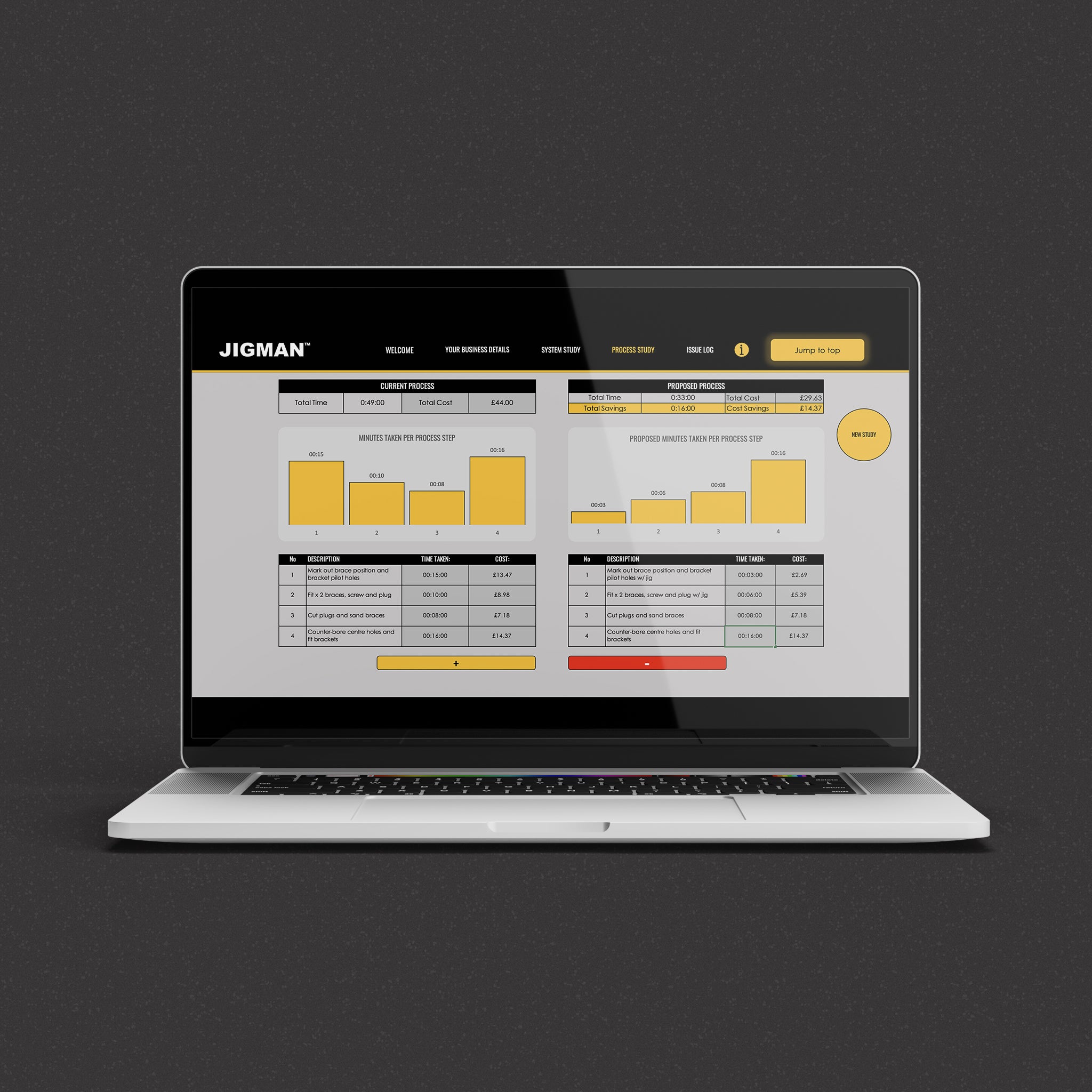
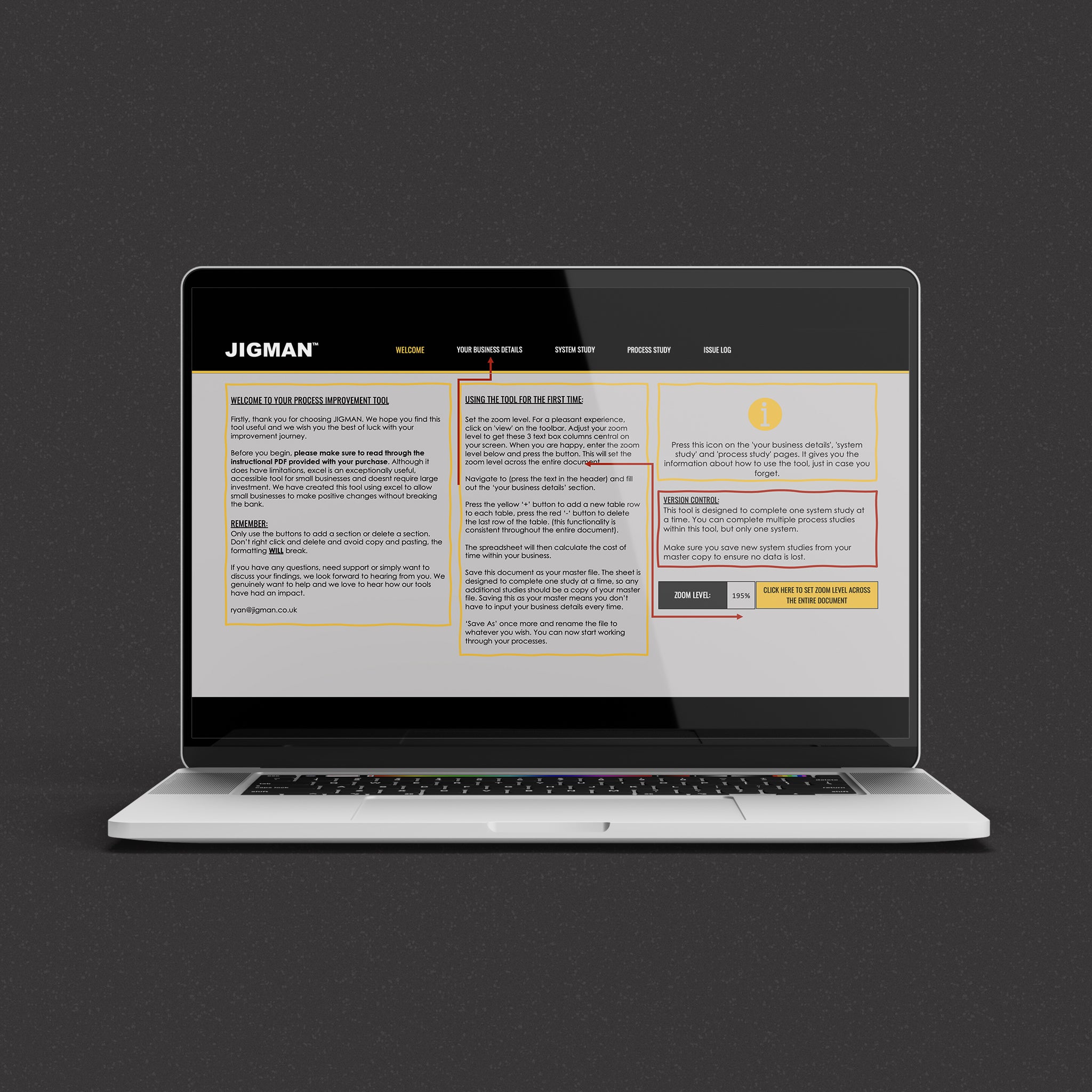
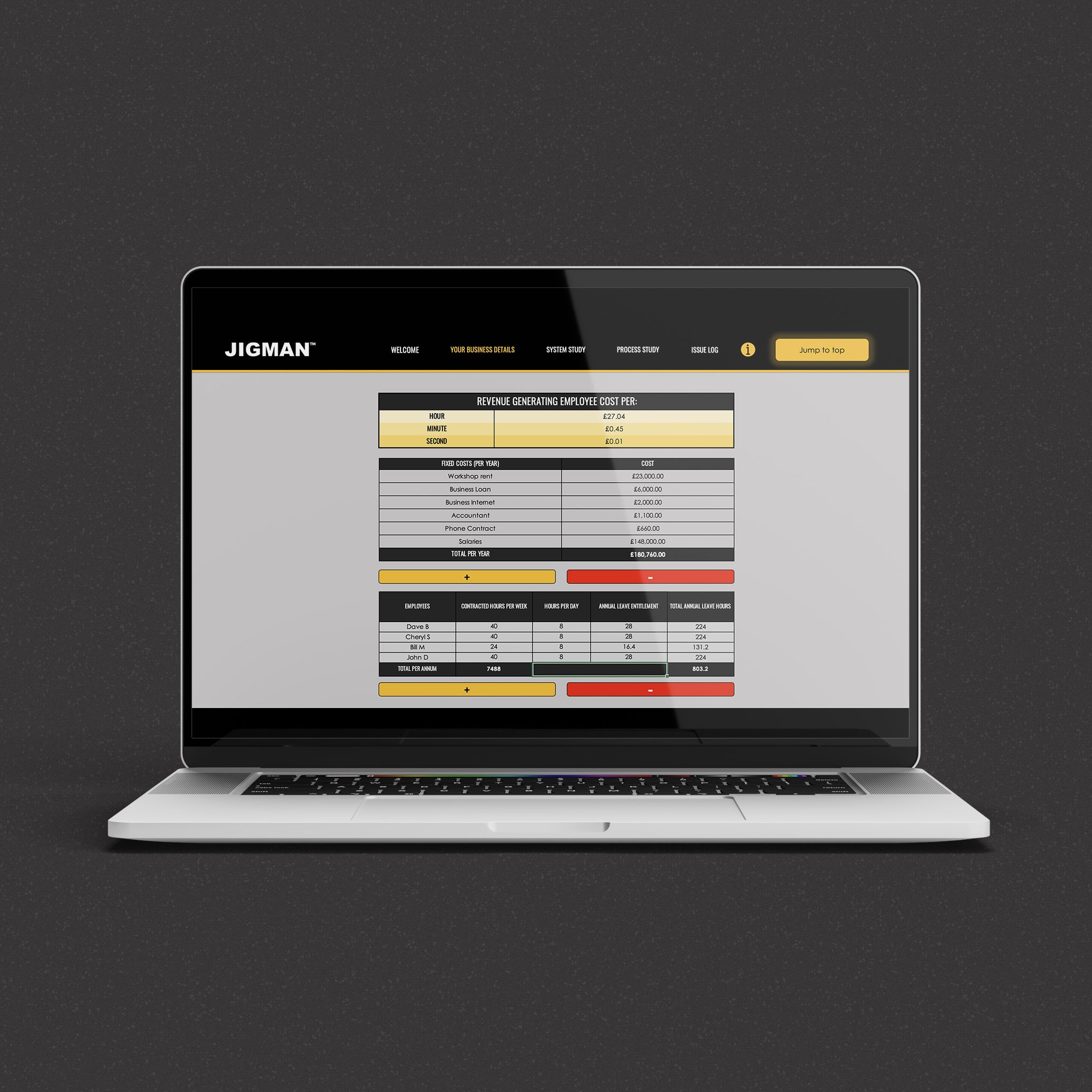
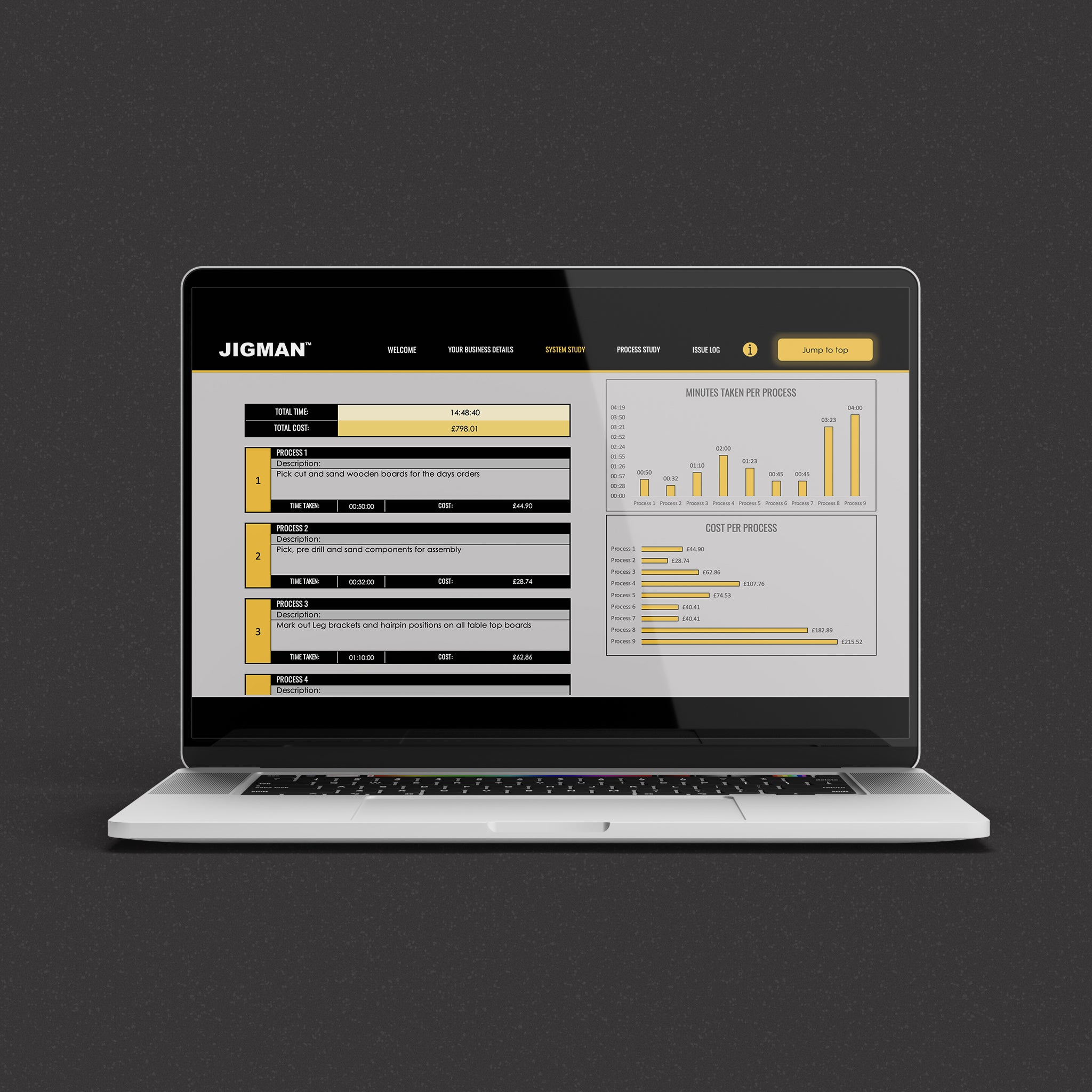
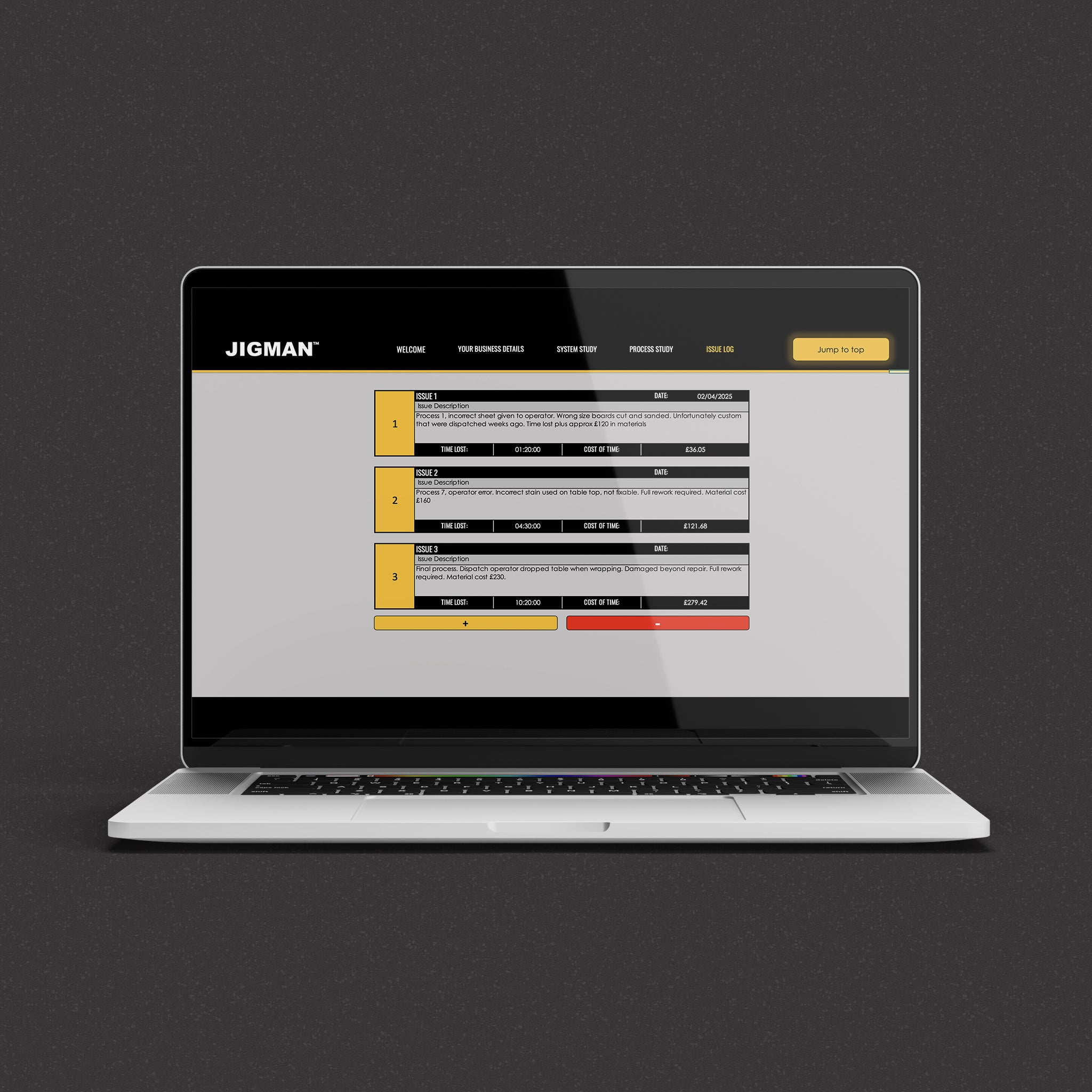
Take control of your business operations with this Excel-based Process Cost Spreadsheet, built specifically for small businesses, makers, department managers and Etsy sellers. This tool helps you break down and cost every part of your production/service processes—so you can see exactly where your time and money are going and how much time and money can be saved with improvement projects.
This spreadsheet gives you a clear, accurate understanding of the true cost of time in your business. Use it to analyse your processes, identify inefficiencies, and make smarter decisions about where to improve. When you can see the financial impact of small changes, you start to run your business differently—smarter, faster, and more profitably.

Understand how waste costs you money:
In a small business, every penny matters, and waste—whether it's surplus inventory, unnecessary movement, overproduction, or defects—directly impacts profitability. Waste isn't just about physical materials; it also includes wasted time, inefficient processes, and underused resources. For example, inefficient workflows result in longer lead times and frustrated employees. Recognising these hidden costs is the first step towards improving operations, cutting costs, and boosting efficiency. By adopting continuous improvement principles, small businesses can reduce waste, streamline processes, and improve profitability without needing large additional investments.
Our toolkit can help you identify and eliminate waste in your business.

Improve quality and reduce defects:
Improving quality and reducing defects is crucial for small businesses looking to boost customer satisfaction and reduce costs. Defects not only result in wasted materials and time but also harm a business's reputation and lead to costly returns or repairs. By implementing continuous improvement techniques, small businesses can identify areas of improvement in their processes, standardise work, and invest in quality control measures. This proactive approach helps to minimise errors, ensures that products meet customer expectations, and ultimately leads to higher efficiency and reduced waste. A focus on quality can also foster customer loyalty and drive long-term business success.

Increase Employee Engagement & Morale:
Continuous improvement methodologies increase employee engagement and morale by fostering a culture of improvement and teamwork. By involving employees in identifying inefficiencies, problem-solving, and process optimisation, CI empowers them to take ownership of their work and contribute to meaningful change. Tools such as Kaizen (continuous improvement) and 5S (workplace organisation) encourage collaboration and create a more structured, efficient environment, reducing frustration caused by unclear workflows or wasted effort. Standardised processes, supported by jigs and fixtures, make tasks easier and more consistent, improving job satisfaction. When employees see their ideas being implemented and experience smoother, more efficient workdays, morale naturally improves, leading to a more motivated and committed workforce.

Gain a Competitive Advantage Without Huge Investment with jigs and fixtures:
Gaining a competitive advantage without huge investment can be achieved by using jigs and fixtures in lean manufacturing. For small businesses, these tools can greatly improve production efficiency and precision without the need for expensive machinery or large investments. Jigs and fixtures help standardise processes, reduce setup times, and ensure consistent quality across products. By customising these tools to suit specific tasks, businesses can streamline their operations, minimise errors, and reduce waste. This allows small businesses to compete with larger companies by offering faster, more accurate products at lower costs, all while keeping overheads low and boosting overall productivity.

We Understand the Challenges of Running a Small Manufacturing Business
Balancing day-to-day operations, meeting customer expectations, and trying to grow—all while keeping an eye on efficiency—can feel overwhelming. You know there are inefficiencies costing you time and money, but finding the right solutions isn’t always straightforward. Consultants can be expensive, and much of the advice freely available is convoluted with unnecessary corporate jargon and theory that doesn’t apply to smaller businesses like yours.
That’s why we created the JIGMAN™️ Improvement Toolkit.
Designed specifically for small businesses, our toolkit provides clear, actionable guidance to help you reduce waste, improve processes, and increase profitability, without the unnecessary complexity. No fluff, no filler theory—just practical, easy-to-use tools and information that delivers measurable results.
Efficiency doesn’t have to be complicated. With our toolkit, you’ll have everything you need to take control, make informed decisions, and build a more efficient, profitable business.

